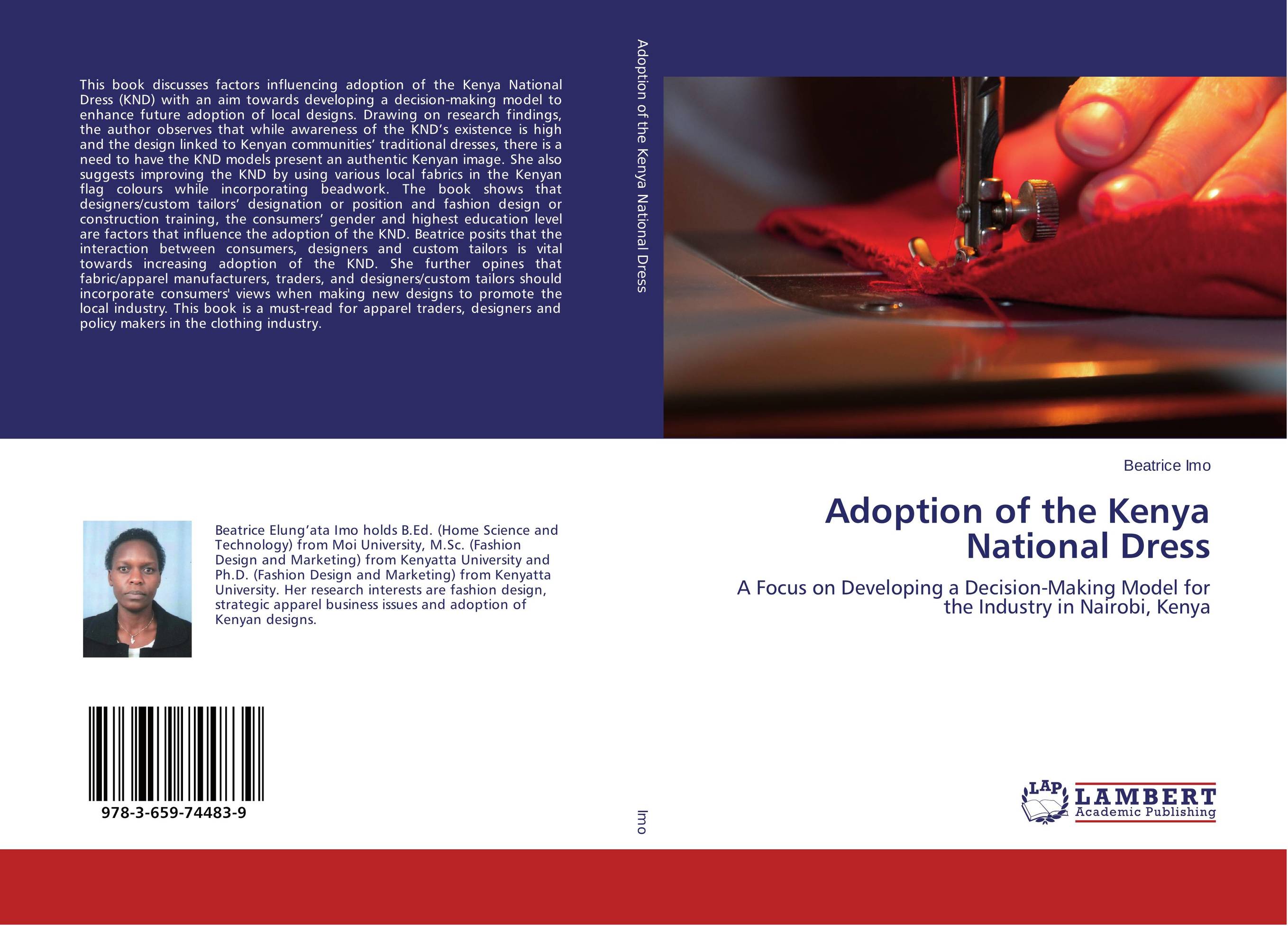| Поиск по каталогу |
|
(строгое соответствие)
|
- Профессиональная
- Научно-популярная
- Художественная
- Публицистика
- Детская
- Искусство
- Хобби, семья, дом
- Спорт
- Путеводители
- Блокноты, тетради, открытки
Adoption of the Kenya National Dress. A Focus on Developing a Decision-Making Model for the Industry in Nairobi, Kenya

В наличии
| Местонахождение: Алматы | Состояние экземпляра: новый |

Бумажная
версия
версия
Автор: Beatrice Imo
ISBN: 9783659744839
Год издания: 2015
Формат книги: 60×90/16 (145×215 мм)
Количество страниц: 164
Издательство: LAP LAMBERT Academic Publishing
Цена: 39002 тг
Положить в корзину
Позиции в рубрикаторе
Сферы деятельности:Код товара: 148661
| Способы доставки в город Алматы * комплектация (срок до отгрузки) не более 2 рабочих дней |
| Самовывоз из города Алматы (пункты самовывоза партнёра CDEK) |
| Курьерская доставка CDEK из города Москва |
| Доставка Почтой России из города Москва |
Аннотация: This book discusses factors influencing adoption of the Kenya National Dress (KND) with an aim towards developing a decision-making model to enhance future adoption of local designs. Drawing on research findings, the author observes that while awareness of the KND’s existence is high and the design linked to Kenyan communities’ traditional dresses, there is a need to have the KND models present an authentic Kenyan image. She also suggests improving the KND by using various local fabrics in the Kenyan flag colours while incorporating beadwork. The book shows that designers/custom tailors’ designation or position and fashion design or construction training, the consumers’ gender and highest education level are factors that influence the adoption of the KND. Beatrice posits that the interaction between consumers, designers and custom tailors is vital towards increasing adoption of the KND. She further opines that fabric/apparel manufacturers, traders, and designers/custom tailors should incorporate consumers' views when making new designs to promote the local industry. This book is a must-read for apparel traders, designers and policy makers in the clothing industry.
Ключевые слова: Apparel Trader, clothing industry, consumption, Designers, loyalty, Market Centres, patriotism, Kenya National Dress, Consumer Clothing Preferences



